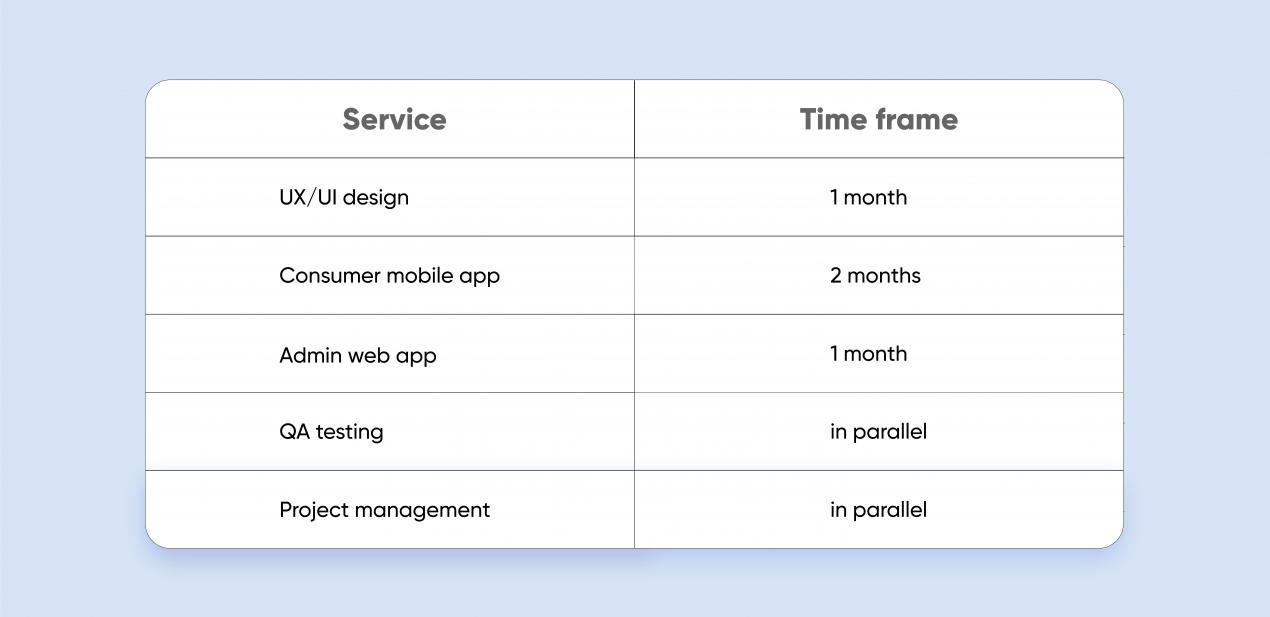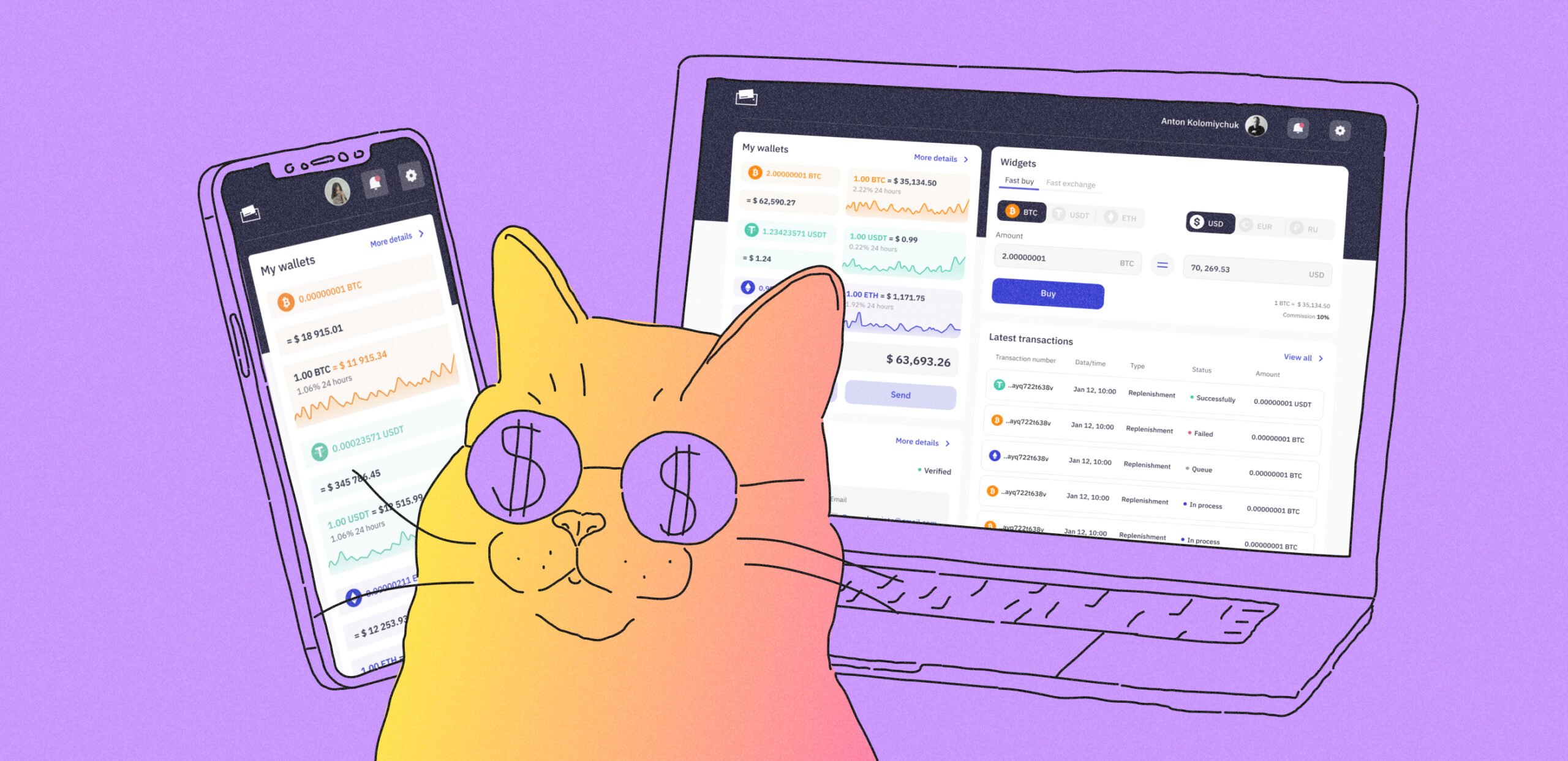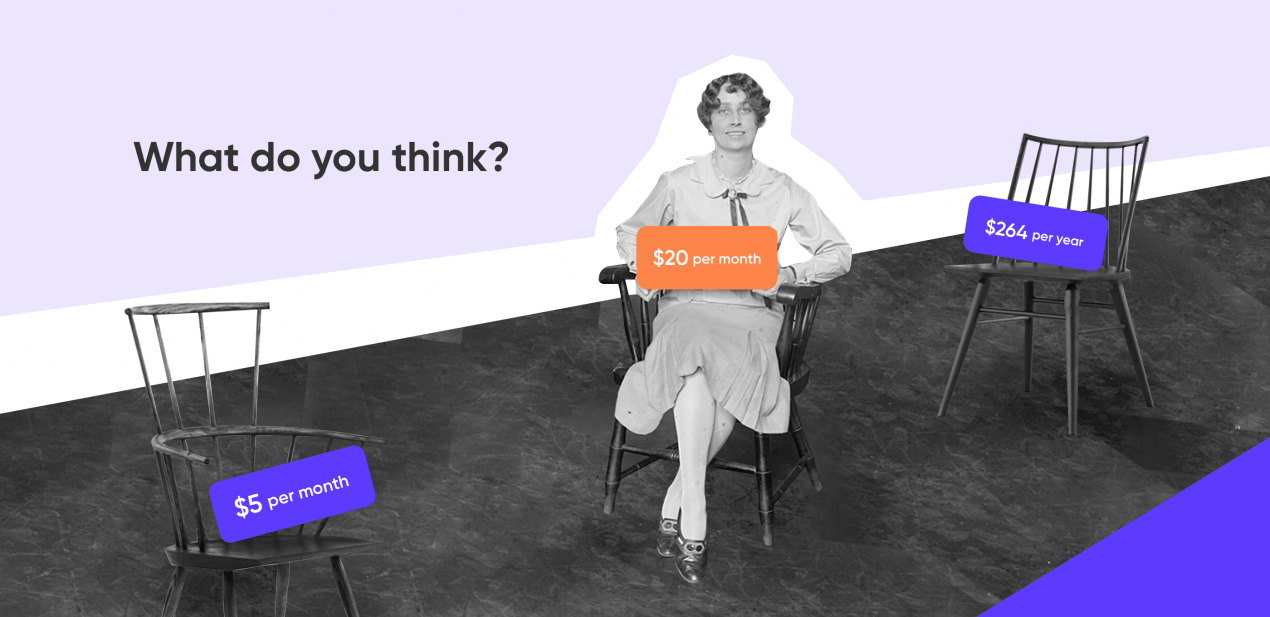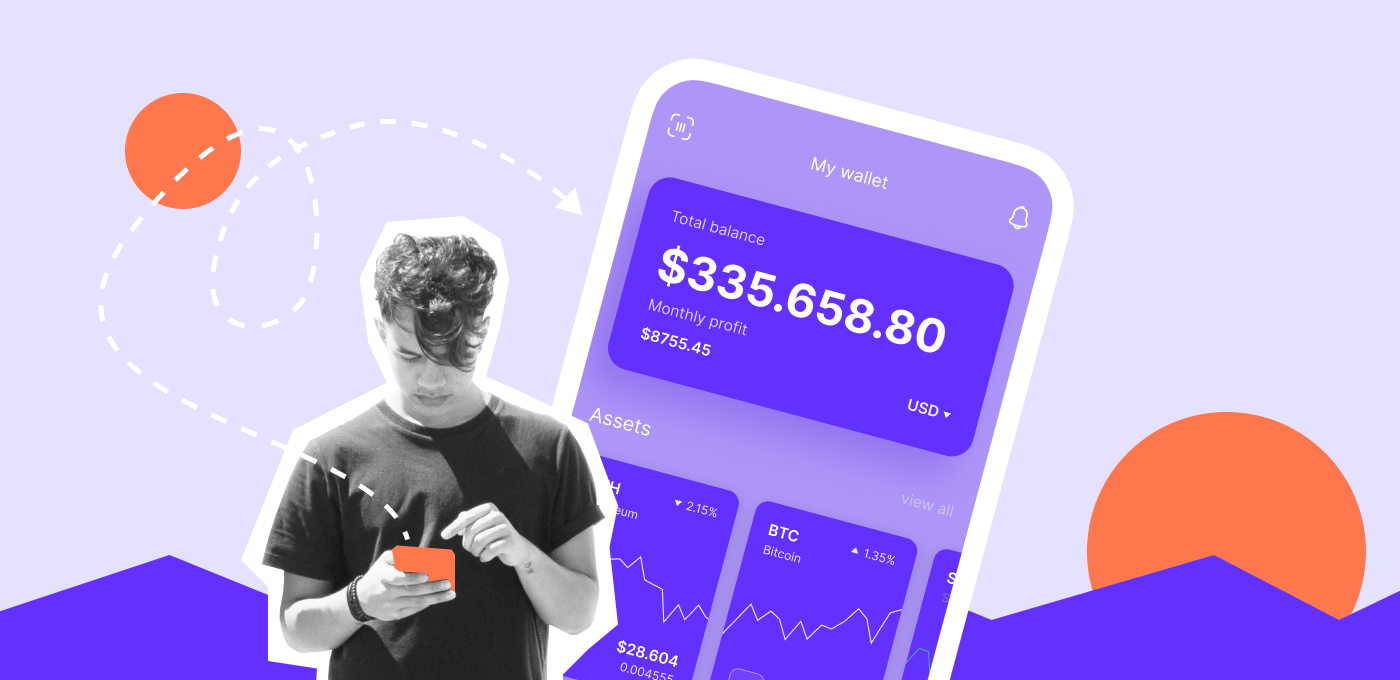Key takeaways:
- The stock trading market is highly competitive.The top 3 competitors are E*Trade, Robinhood and Stash
- For monetization of your app, you can collect interest from the uninvested funds, offer a premium subscription or charge a small fee for every transaction made
- To avoid penalties when trading stocks, it’s crucial to be well-prepared. This means becoming a broker-dealer, joining investor safeguard programs, securing data, and implementing measures to protect user data.
- The estimated cost of developing a stock trading app is from $75,000 to $85,000 for a full cycle of development
Many millennials’ response to the pandemic was to start micro-investing in stocks, inspired by the GameStop short squeeze, meme stock frenzy, the notoriety of subreddits like r/WallStreetBets, and with more time and disposable income on their hands. According to statistics, in March online investment service Wealthsimple saw an increase in users by 54%, most of them were aged 34 and below, while the stock trading app Robinhood reported to have the biggest number of deposits in the first three months of the year, with daily trades rocketing up 300% in contrast to the end of 2019.
Stock trading is a trending sector of mobile app development, and right now is the perfect time to jump on the market. This article details how to create a stock trading app without the headache, revealing all the secrets about competitors, monetization strategies, key features, and costs. Enjoy our guide!
How do stock trading apps work?
To put it simply, a stock trading app is a user-end platform where stocks are being bought and sold. Users download an app to invest in stocks, both long- and short-term, and also, to track the market in real-time on a smartphone. Brokers secure stock exchanges on trading platforms and make commission on trades. Usually, trading is divided into two types: traditional stock trading, when you buy a company’s share, and cryptocurrency trading with Bitcoin, XRP, Litecoin, and others.
Remember, that there are a lot of safety concerns in finances, and to run a stock trading app you have to obtain a license in all countries where you’re planning to be represented.
Who else is on the market?
We have to be honest, the stock trading market is highly competitive, and in order to build a successful trading system, you need to know your competitors. Check our lowdown on the market — other stock trading platforms:
E*Trade is considered to be a founding father of brokers with its online presence. They offer two easy-to-use well-executed apps — E*Trade and the more advanced Power E*Trade, both developed for Android and iOS and allow users to easily manage their stocks, get real-time updates, reports and check the market news. This trading platform offers adjustable performance risk and no commission on stocks and EFTs (exchange-traded funds). Instead, they charge investors per contract, and the fee depends on how frequently you trade.
Robinhood is a relatively new trading system that was founded in 2013, 30 years after E-Trade. They also cover all stocks, options, ETFs, and cryptocurrency trading, but their main appeal is “no commission” per trade. How do they make money then? Find the answer in the next section about monetization strategies. This investing app is extremely versatile and tries to keep up with modern trends. For example, in 2019 they launched a follow-up Robinhood Snacks app with ‘digestible financial news’ and even their own podcast (!), that hit millions of downloads in the first 9 months.
Stash is also loved because of its educational content, simple interface, and onboarding support — that’s why it’s considered to be a good option for beginners. To start, the app asks users questions about their goals and expectations to choose risks and the strategy for investments. The company provides stocks and ETFs trading, charging a monthly fee from $1 to $9, depending on your account plan.
How does a stock trading app make money?
Monetization strategy first, execution after. Before thinking about how to build a stock trading platform, we recommend defining how you can make money from it and what your business model is going to be. There are numerous monetization options, and in the article, we review the most popular and effective ones:
- Interest. For example, Robinhood collects interest from uninvested funds on customer’s balance and gets heavily criticized because of that. Yes, users pay extra for it — it’s like when a bank collects interest from your cash deposit on the amount you have.
- Premium subscription. That’s exactly how apps like Robinhood make money — they offer their users a Robinhood Gold account. For $2000 on your balance, you get access to extra stocks, margins, and extended hours of trading.
- Fee per trade. Some apps charge a small fee per every transaction investor makes, it’s also a strategy to go.
Key features for a stock trading app
When we are asked how to create a stock trading app, this is usually a question of how to pick the main features for an app interface. First of all, we recommend thinking about a customer and their journey through an app — where they are going to tap, scroll, or need help from your side.
Based on our experience, we created a list of must-have features for a stock trading app. Feel free to use them for your platform or just contact us directly if you want to get more insights about it.
Registration form
At the beginning of every stock trading app is a sign-in/login form. The general advice is just to make the page as simple as possible because no one wants to spend time filling all fields in. At the same time, you will be dealing with financial information, and privacy and data safety is very important. Think about an authorization process you want to implement — ID check, social media integration, or 2FA. Also, make sure you provide clear Terms and Conditions and explain that users’ data is safe. Experienced UX designers will help you to make sure the page contains everything it needs and doesn’t seem too overwhelming.
Onboarding
It is crucial to help users with orientation and explain how your app works. If you do it at the very beginning, you will prevent users from getting frustrated, because they can’t find a certain button.
Personal profile
Profile page should contain all necessary information about a user — a name, a photo, language preferences.
Dashboard
A dashboard should present the user’s portfolio and contain information about the current balance, all stocks, and options that a trader owns. This page will have lots of charts, numbers, and sections and constantly update data online, so work closely with your UX-designer to build a clear and easy-to-understand interface.
Trading functionality
This page should display real-time charts, company profiles, growth overview, and other elements that help users to make a decision to invest.
Payment options
To buy and sell stocks, an app also needs payment options. To build an app like Robinhood, we recommend considering a payment gateway integration to secure transactions and personal data.
Analytic reports
Let users track their own performance, see the stats and analytics. Some apps also send auto-generated reports every once in a while to keep users updated and engaged.
Also, here is a list of some nice-to-have features that will help your app to thrive:
- Search engine;
- Sorting and filtering tools;
- Newsfeed, to keep up with what’s going on the market;
- Push-notifications when stock moves.
What legal issues to consider when creating a stock trading app
Keep sanctions in mind. If an entrepreneur doesn’t comply with the domestic laws of the country they are doing business in, their app is going to be penalized. In some cases, they can get a fine of up to $10,000 — or they can be suspended from interacting with stocks in any way. Also, this process will go smoother if you hire a lawyer. It will cost extra — but will save you from hefty fines.
Here are some legal issues to think over:
Signing up as a broker-dealer. Obtain a license — get it from the regulatory body specific to your app’s country of origin. You can get accredited by several organizations in the financial services industry: SEC in the US, or ESMA if you’re in the EU.
Joining programs that protect investors’ interests. You’ll make your product more credible — more investors will use your app. In the US, you can become a member of the NFA, SIPC (Securities Investor Protection Corporation), or FINRA. If you’re in Europe, you can apply for GDPR. These organizations keep watch of certain local guidelines, such as “Know Your Customer”, “Anti-Money Laundering”, “Customer Identification Programs”. Familiarize yourself with them to avoid legal trouble.
Ensuring your users’ payment data security — complying with industry standards. This guarantees that you can integrate transactions legally within your stock trading app. To do so, you should abide by rules enforced by the PSD2 Directive in the EU or NIST in the US. Keep in mind that you’ll have to take security measures to obfuscate payment info from hackers.
In the future, incorporating even more safety solutions to ensure user data protection. As hackers become more advanced, so do local regulations — governing bodies keep fine-tuning terms and conditions. You’ll have to work with different types of technology to keep up and provide security: multi factor authentication, AI-based fraud prevention tools, and the like.
Note that this process is easier to complete if you already have an authorized brokerage business — you’ve obtained relevant licenses, and you want a mobile app to just tap into these mobile app markets. If you’re a fresh startup, it’s going to take longer. But it’s an essential step to take — to avoid getting into legal trouble.
Fortunately, this entire process and the development of your mobile app can go hand-in-hand. You don’t have to wait for license approvals to create the design of your product. Less time wasted means you’ll be able to test even more hypotheses than you could before — and earn more money.
Which tech stack should your stock trading app use
The tech stack you use depends on the expertise and relevant skill-set of your development team. Try to hire developers with a sizable portfolio under their belts. They’ve most likely already dealt with projects similar to yours, which is why miscommunication and delays are unlikely to happen. We’ve outlined the exact process of how to find the perfect team in the article below:
We at Purrweb recommend you use a JavaScript based technology stack. Working with these tools has been a great success — we have developed over 300 projects with it. You’ll be able to build a trading platform that works smoothly on any device.
Choose React.js and Node.js if you’re planning to create a web-based app. The former one is used for the frontend part of the app — the interface with which the user interacts. The latter — for the backend, or the “server” side of things. Together, these frameworks provide better performance. Your app will run fast — it won’t annoy your users with glitches.
Opt for Electron.js if your main goal is to create a desktop app, you won’t have to overspend on two separate teams of developers — you can create a product that’s compatible with MacOS and Windows using HTML, CSS, and JavaScript.
Consider React Native — it’s the best bet for a mobile app. You’ll be able to develop an app that works on both iOS and Android, saving time and money. A singular team can finish both versions simultaneously, and spend half the time.
Key steps of stock trading app development
At Purrweb, we have streamlined stock market app development into 5 steps. This development process differs agency-by-agency, but if you’re going to work with us, the stages we use are laid out below:
Step 1. Analyze what’s out there on the market
You should conduct market research beforehand — identify the niche in which your product lies. Also, think about the audience. What problems do they face, how can you help potential customers solve them with your product? Don’t forget your competitors — how do you stand out, given that the stock trading app market is extremely competitive? Identify their flaws and use them to your advantage: include new features, improve accessibility, create intuitive design. You can scour through their reviews, or hire experts to do this for you.
Step 2. Decide on the core features of your app
Think of the features you’re going to include in your stock market app. Payment API’s and dashboards are crucial. At this stage, you should also think about some other nice-to-have features you’re going to include, that can set your business apart from your competitors.
Step 3. Create the design of your product
Picking a pleasing design is a crucial step of stock trading app development — “old-timey” and awkward design worsens the users’ perception of an app. Choose a solid UI/UX team and brainstorm the look of your app together.
Step 4. Write the code and test your MVP — keep legal technicalities in mind
With a team and a general idea of a stock market app, it’s time to start a trading platform development — most notably, the first version of the platform. The team will take into account the subtleties of stock trading app business. They will develop the product according to plan: functional, with great UI/UX design, adhering to every regulation needed.
It’s crucial to put the MVP to test before the release. This way, you can fix the bugs prior to release.
Step 5. Iterate upon user feedback — flesh out the stock market app
The process of stock market app development is far from over, even after release. You’ll have to analyze your users’ feedback and keep adjusting the app and incorporating some features your customers thought were lacking.
How we designed a stock trading app in fintech
At Purrweb, we used this process to develop Fintarget. It’s an app for beginner investors who just started their journey in trading. The owners of this startup came to us with an idea — to attract more customers by showcasing that trading stocks is easy, even for users without much experience.
We helped them create an MVP in under 3 months — mostly helped with UI/UX design. As a result, we designed the registration form, a user profile, and an investment portfolios page. In the end, the startup owners got a web-based version and the mobile app version of the design.
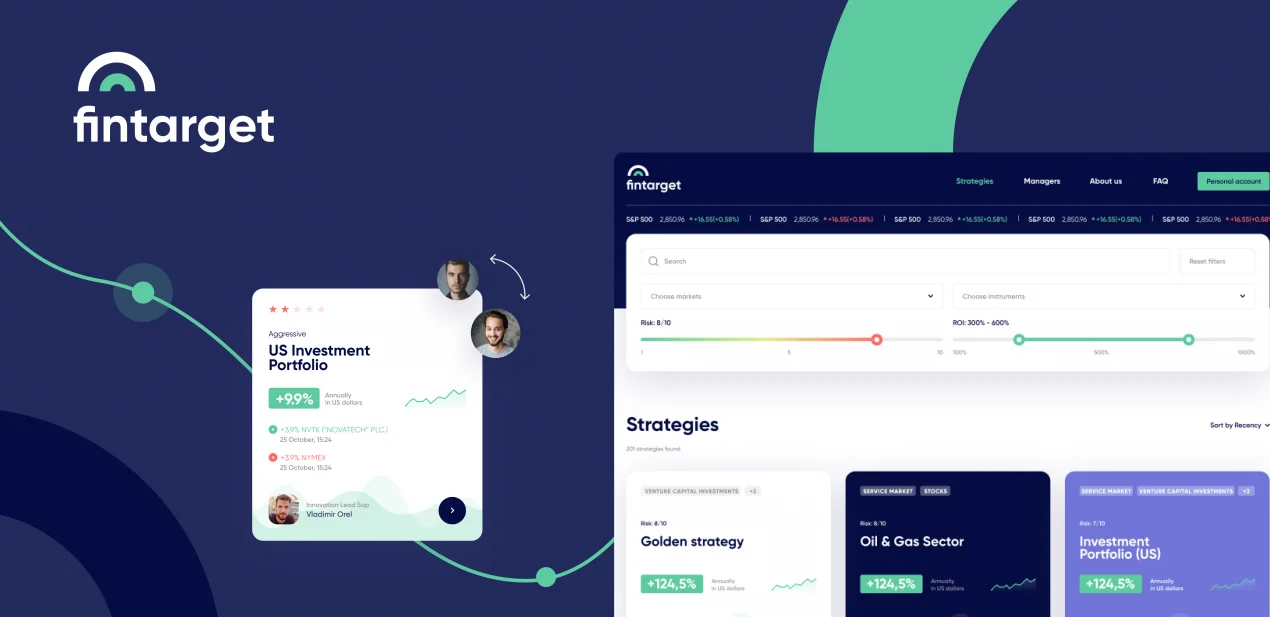
While working on Fintarget, we’ve simplified onboarding and made the app easy to navigate. This ensured that more users would download and use it
How much does it cost to create a stock trading app?
If you have been thinking about how to build a stock trading app and make it successful, there is only one winning strategy — to be as user-friendly as possible. When it comes to such a difficult topic like finances, everything should be clear and straightforward — the simpler an interface is, the more people entrust in you and the more often they come back to the app to trade and exchange. That’s why we recommend investing in UX/UI design and check the portfolio of our contractor beforehand. Just Google the company name or check out the Dribble and Behance websites to see their previous works.
Also, we know that time of development is crucial for trending and dynamic markets like stock exchange apps. If you decide to spend more time on UX/UI design to execute the app perfectly, then the development should be reactive. Good news! We work with React Native and we know how to build a stock trading software in 6 months. The framework uses a shared codebase for different mobile platforms and allows us to build both Android and iOS apps with one code. It simplifies the development process, and there is no longer a need to hire two different teams and control two parallel developments. You don’t have to be worried about the interface performance — React Native has a huge library of native UI-elements, that make interfaces scroll, swipe, and act like native ones.
Not only does React Native save a lot of time and money for clients, but it also allows the possibility to focus on UX/UI design, while JavaScript bridge does its work.
But how much does it cost to create an app like Robinhood? Let’s do the math now!
Key in your e-mail address to get a full breakdown of the estimation with all details
Thank you! You will be contacted soon!
Overall, the team of 6 people will work on your trading platform. According to similar projects we have made, the estimated cost of development is from $75,000 to $85,000 for a full cycle of development, including UI/UX design, building a prototype, testing, creating iOS and Android versions, and more. As a bonus, we will answer all your questions on how to create a stock trading app and share with you tips and secrets about successful execution. All you have to do — is contact us through the form below, and we’ll do the rest!





